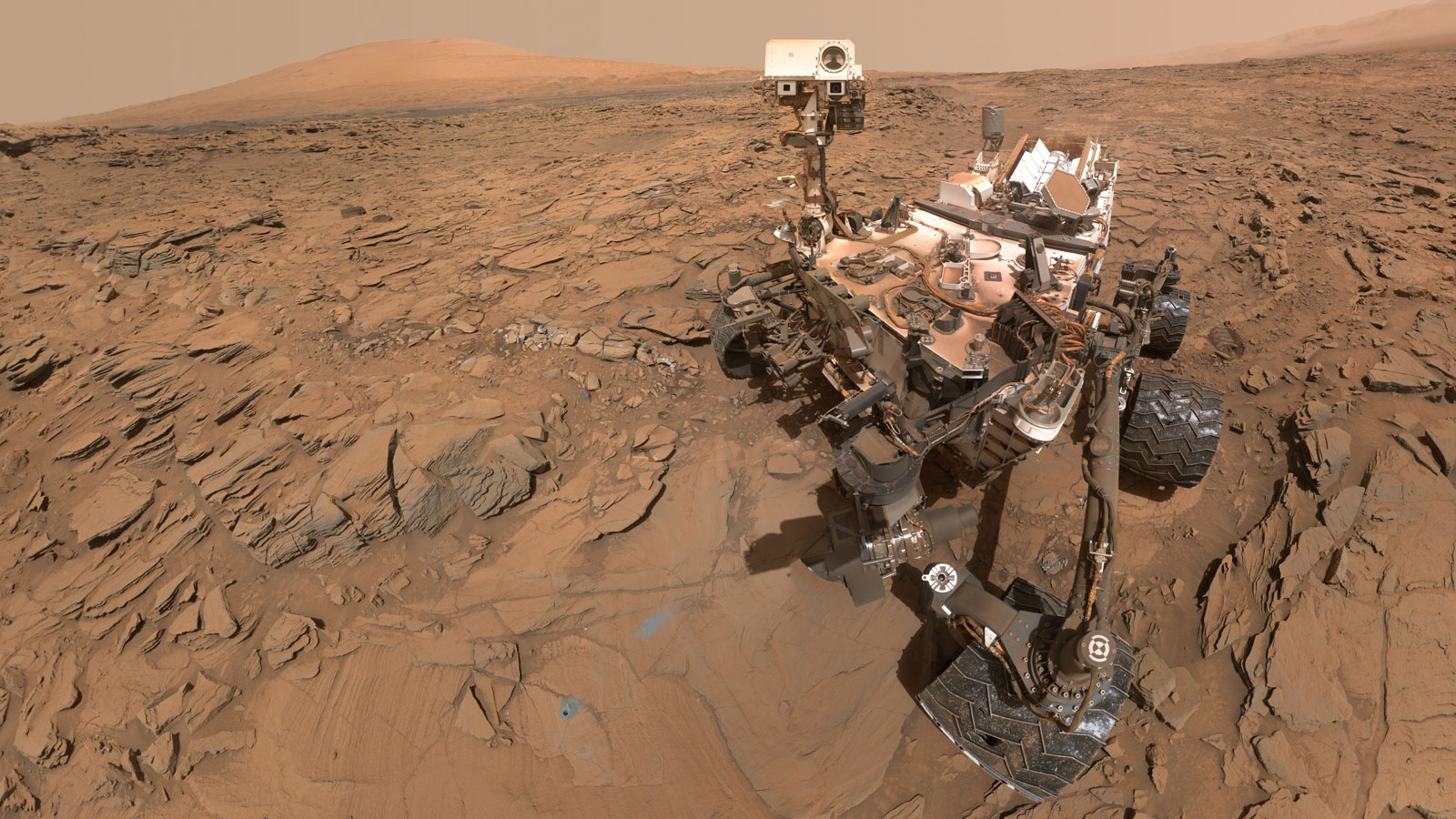Missions
Mars Science Laboratory: Curiosity Rover

This May 11, 2016, self-portrait of NASA's Curiosity Mars rover shows the vehicle at the "Okoruso" drilling site on lower Mount Sharp's "Naukluft Plateau." The scene is a mosaic of multiple images taken with the arm-mounted Mars Hands Lens Imager (MAHLI). Credit: NASA/JPL-Caltech/MSSS
Mars Science Laboratory: Curiosity
- Launched on Nov. 26, 2011
- Designed to seek signs of habitability on past or present Mars
Powered by:
- One MMRTG for power and heat
Goals: NASA's Mars Science Laboratory (MSL) is a large, powerful science rover designed to study the layered rocks of Gale Crater on the Red Planet. Its main objectives are to try to determine if life ever arose on Mars, to characterize the planet's climate and geology, and to help prepare for human exploration.
During its two-year primary mission, Curiosity will analyze samples drilled from rocks or scooped from the ground as it explores with greater range than any previous Mars rover. Its assignment: Investigate whether conditions have been favorable for microbial life and for preserving clues in the rocks about possible past life.
Accomplishments: The rover successfully landed on Aug. 5, 2012 using guided entry and a sky crane system—new techniques that enhance NASA's capabilities for delivering payloads to the surface of Mars.
